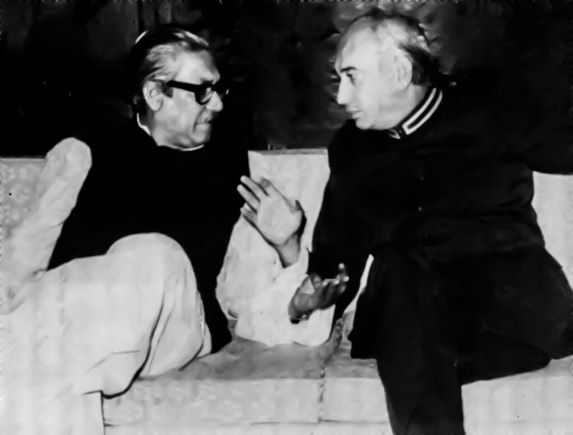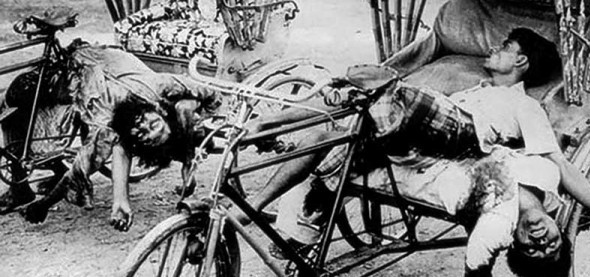By P.K.Balachandran
Bangladesh got its freedom from Pakistan de facto on December 16. 1971, following the surrender of 93,000 Pakistani troops to the Indian armed forces on that day. However, Bangladesh observes its Independence Day on March 26 because it was on March 26, 1971, that a clandestine radio station calling itself the Swadin Bangla Betar Kendro (located in Kalurghat near Chittagong) broadcast that Sheikh Mujibur Rahman has declared the independence of Bangladesh from Pakistan.
The horrific genocide which forced Sheikh Mujib to declare independence has been described by Inam Ahmed and Shakhawat Liton in their book entitled: Genocide They Wrote: A rebuttal of Pakistan’s denial of its 1971 crimes in Bangladesh (Daily Star Books, 2016).
Around midnight on March 25, the Pakistani army started massacring Bengalis, including government officials, police and army personnel, university students and teachers, and ordinary men, women and children, using tanks, artillery, machine guns, small arms, and rifle bayonets. Flame throwers were used to burn houses. “Operation Searchlight” had all the hallmarks of a genocide. According to Sheikh Mujib, over three million were killed.
Orders to crush the Bengalis came from Gen.Tikka Khan who had told his successor Gen.A.A.K.Niazi: “I want the land and not the people,” (Niazi: The Betrayal of East Pakistan). Maj.Gen.Rao Farman Ali, who commanded “Operation Searchlight” had written in his table diary: “Green land of East Pakistan will be painted red.”
Zulfiqar Ali Bhutto, who was planning to grab the Premiership of Pakistan from its legitimate claimant, the Bengali leader Sheikh Mujibur Rahman, was in Dhaka on March 25. “Bhutto saw Dhaka burning, the roar of tanks, the boom of guns and rockets and the rattle of machine guns,” Niazi wrote. Before flying back to West Pakistan on March 26, Bhutto said: “Thank God. Pakistan is saved.”

But Pakistan was not saved, “Operation Searchlight” ended in the dismemberment of Pakistan, the emergence of an independent Bangladesh and the surrender of 93,000 Pakistani soldiers including their commander Gen.A.A.K.Niazi to Bhutto’s arch-enemy, India.
Bhutto’s conflict with Mujib followed the December 1970 National Assembly elections. Out of 300 seats up for grabs, Mujib’s Awami League had won 160 (all from East Pakistan) and Bhutto’s Pakistan Peoples’ Party (PPP) won 81 (all from West Pakistan). Mujib should have been asked to form the government, but President Yahya Khan, egged on by Bhutto, felt that an East Pakistani Bengali party could not rule Pakistan. This triggered a mass movement in East Pakistan which eventually led to a call for an armed struggle for an independent Bangladesh. The genocidal “Operation Searchlight” was but an attempt to crush the movement with one telling blow.
Brig.Gen.Siddik Salik, the PRO of the Pakistani army in the East, described the scene on the night of March 25 in his book Witness to Surrender: “ I watched the harrowing sight from the verandah for four hours. The prominent sight of this gory night was the flames shooting to the sky.” The tallest columns of smoke and fire emerged from the university campus, he recalled.
At the Dhaka University campus, Pakistani troops herded students, teachers and employees only to mow them down. Surviving students were ordered to bury the dead in mass graves. Archer K.Blood, the US Consul General in Dhaka, wrote in his book: Cruel birth of Bangladesh that he saw two mass graves in Dhaka University one near Iqbal Hall and the other at Rokeya Hall. “Here is Dhaka we are mute and horrified witnesses to a reign of terror by the Pak military,” he wrote.
About 10,000 Hindus in Old Dhaka were butchered as Pakistan considered the Hindus a fifth column of India which was backing the Bangladesh movement. American priests told Blood that the Pakistani army would set fire to houses and when the inmates ran out, they would be gunned down.
Blood kept Washington informed through regular cables. But the State Department was unmoved, because the US, then under President Nixon and his National Security Advisor Henry Kissinger, were using Pakistan to bring about a US-China rapprochement to counter the Soviet Union. The Soviets were backing India and the Bangladesh liberation movement. Blood was transferred to the State Department.
Pakistan’s only friend in East Pakistan then was the Jamaat-e-Islami which had vowed to keep Pakistan united “to save Islam from India and the Hindus.” On its part, the army spawned organizations like Shams, Razakars, Al Badr and Mujhahids. These were guides to freshly inducted Pakistani troops. With 50, 000 members these outfits indulged in mass killing of Bengali intellectuals, writers, artistes, poets in the final days of the war. On December 14, massacres of intellectuals took place in Rayar Bazaar and Mirpur. Al Badr chief, Matiur Rahman Nizami, was later sentenced to death for killing 450 civilians, and indulging in rape in several places. These elements had totally alienated the Bengali population from Pakistan, confessed Brig.Gen. Siddiq Salik.
A silver lining in the dark cloud was the strong presence of foreign correspondents in Dhaka. They had arrived to cover the political conflict between East and West Pakistan over which party should rule Pakistan. PPP’s Bhutto and President Yahya Khan were in Dhaka to talk to Sheikh Mujib to find a way to reconcile the conflicting demands of Mujib’s Awami League and Bhutto’s PPP. But unknown to the media, Pakistan was preparing for a crackdown which was to start if the talks failed. As expected, the talks failed, and “Operation Searchlight” was launched. Mujib was arrested, flown to West Pakistan and jailed.
Mort Rosenblum of the Associated Press said in his story entitled “Pakistani vultures too full to fly”: “Vultures too full to fly perch along the Ganges River in grim contentment. They have fed on perhaps more than half a million bodies since March.” He went on to say that the killing and devastation defied belief and that the number killed could be a million.
Michael Laurent, the AP photographer told the The Times that over 200 students were killed in Dhaka University’s Iqbal Hall and that a mass grave was dug at Jagannath Hall. He saw 20 bodies lying in the dormitories and grounds of the university. He said troops fired bazookas into the Medical College Hospital. But the most damning evidence was a video clip put out by NBC TV of a group of students being mowed down in Dhaka University.
Details on the callousness of the Pakistani top army brass came out in the report of the Hamoodur Rahman Commission which was set up by the Bhutto government to inquire into the debacle in East Pakistan. Lt.Col.Aziz Ahmed Khan told the commission that Gen.A.A.K.Niazi would casually ask subordinate officers: “How many Hindus have you killed?” In May 1971, there was a written order to kill Hindus, Aziz Ahmed Khan told the commission, adding that he had followed orders to destroy all houses in Joydebpur. Brig.Iqbalur Rahman Shariff said that “Bengalis were just clay pigeons to be shot at.”
Maj.Gen.Rao Farman Ali, who commended the troops in “Operation Searchlight” said: “Harrowing tales of rape, loot, arson, harassment and insulting and degrading behavior were narrated.” Lt.Col. Mansoor ul Haq said: “There was a general feeling of hatred against Bengalis amongst the soldiers and officers, including Generals.”
The Hamoodur Commission recommended trial of President Yahya Khan and a number of army officers. As Prime Minister of an independent Bangladesh, Mujib too wanted to try 195 Pakistani officers. He told New York Times in 1972: “Three million people were cold-bloodedly murdered. Two hundred thousand girls have been raped by the Pakistan army. Ten million people had to migrate to India and another 15 million people moved from place to place out of fear. The world should know what has happened.”
Bhutto did not release the Hamoodur Rahman Commission report to avoid embarrassing the army, and Sheikh Mujib could not try any Pakistani as Bhutto threatened to charge with treason, 400,000 Bengalis living in West Pakistan.
END
























































